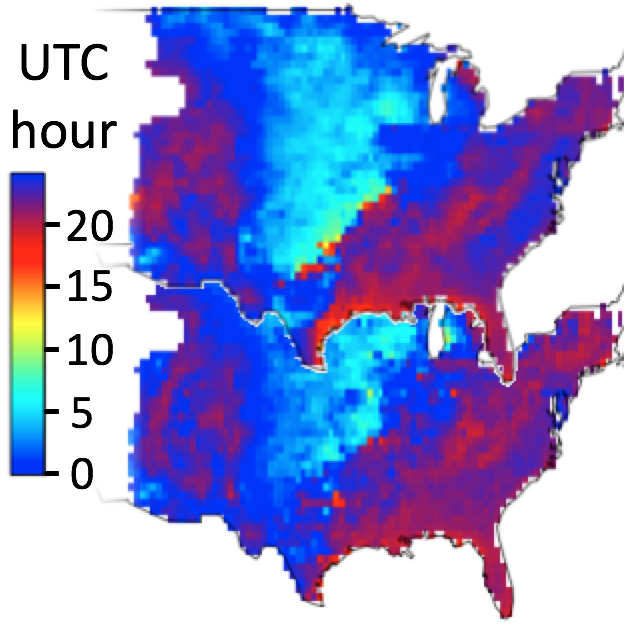Romps, Charn, Holzworth, Lawrence, Molinari, and Vollaro, CAPE times P explains lightning over land but not the land-ocean contrast, GRL, 2018
Paper
Description
In an earlier paper, it was shown that CAPE averaged over the continental United States (CONUS) times CONUS-integrated precipitation (P) was an excellent proxy for CONUS-integrated lightning. That proxy was then used to predict changes in U.S. lightning due to global warming. But, that study did not test whether CAPE x P accurately predicts the spatial distribution of lightning or its diurnal cycle.
In this study, eight different data sets are used to evaluate the performance of CAPE x P as a spatially and temporally resolved proxy for lightning (three reanalyses, three lightning datasets, a precipitation data set, and radiosonde data). It is found that the seasonal maps of CAPE x P over CONUS match the seasonal maps of lightning. In addition, CAPE x P captures the diurnal cycle of lightning; the figure below shows the timing of the maximum strike rate during JJA as predicted by the CAPE x P proxy and as observed from actual lightning.
One might hope that CAPE x P could explain why the lightning strike rate is an order of magnitude higher over land than the ocean. The idea would be that the low heat capacity of the land surface would allow CAPE to spike in the afternoon, allowing the average strike rate to be significantly higher over land even if the diurnal-mean CAPE values are not much higher over land. This idea does not pan out, however: CAPE x P is not significantly different over land as compared to over ocean. Some other factor, such as aerosol concentration or boundary-layer depth, is responsible for the land/ocean contrast.
(top) The hour (UTC) in which CAPE x P maximizes in JJA. (bottom) Same, but for the lightning strike rate.
